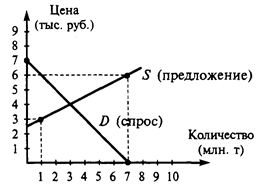THE ENDOCRINE SYSTEM AND ENDOCRINE DISEASES
The endocrine [‘endo u krain] system (to be) ______ a control system of ductless glands. These glands (to secrete) _____________ chemical messengers. They (to call) _____________ hormones. These hormones (to circulate) ________________ within the body via the bloodstream to affect distant organs. Hormones (to act) _____________ as "messengers," and (to carry) _________________ by the bloodstream to different cells in the body. The endocrine system (not to include) _________________ exocrine glands such as salivary glands, sweat [swet] glands and glands within the gastrointestinal tract.
The field of medicine that (to deal) _________ with disorders of endocrine glands (to be)_____ endocrinology, a branch of the wider field of internal medicine. The endocrine system (to link) ____________the brain to the organs that (to control) ______________ body metabolism, growth and development, and reproduction.
The most important parts of the endocrine system (to include) _____________ the ‘hypothalamus [ai], the pituitary [pi’tjuiteiri:] gland, the pineal [‘pi:niel] gland, the thyroid [‘Oairoid] gland, the parathyroid [paere’Oairoid] glands, the heart, the stomach and the intestines, the liver, the pancreas, the adrenal [ed’ri:nel] glands, the kidneys, the skin, the testes [‘testi:z] in males, ovaries [‘ouveriz] in females, and the placenta [ple’sente] in females when pregnant. Among the hundreds of endocrinological diseases (to be) _____:
The most common diseases of the endocrine system (to be) ______ diabetes mellitus and thyroid disease. Diabetes mellitus [daie’bi:ti:z] (to be) _____ a medical disorder. It (to characterise) ____________by varying or persistent hyperglycemia [‘haiperglaisi:mie] (high blood sugar levels), especially after eating. All types of diabetes mellitus (to share) ____________ similar symptoms and complications at advanced stages. Hyperglycemia itself can (to lead) ___________ to dehydration. Longer-term complications (to include) _________ cardiovascular disease (doubled risk), chronic renal failure, retinal damage which can (to lead) ________ to blindness, nerve damage which can (to lead) _________ to erectile dysfunction (impotence), gangrene with risk of amputation of toes, feet, and even legs. Serious complications (to be) _________ much less common in people who (to control) __________ their blood sugars well with their lifestyle and medications. In 2006, according to the World Health Organization, at least 171 million people worldwide (to suffer) _____________ from diabetes. The most important forms of diabetes (to be) _________ type 1 diabetes and type 2 diabetes. The most common symptoms of diabetes (to be) ______________ increased urination, increased thirst, increased hunger, poor healing of wound and injuries, and importence. Type 1 diabetes (to know) ______________ as insulin-dependent diabetes, childhood diabetes, or juvenile-onset diabetes). Type 1 diabetes (to diagnose) _____________________ most commonly in children and adolescents, but can (to occur) ____________ in adults, as well. Diabetes mellitus type 2 (to be) _______ non-insulin-dependent diabetes, NIDDM or adult-onset diabetes. Type 1 diabetes (to require) _________________ insulin injections for survival. Type 2 diabetes (to manage) _____________________ generally with diet, weight reduction and exercise in about 20% of cases. The majority (to require) ________________ these strategies plus oral medication Insulin (to use) ______________ if the tablets (to be)_______, or (to become), ineffective. Other health problems that (to accelerate) ________________ the damaging effects of diabetes (to be) ________ smoking, elevated cholesterol levels, obesity, high blood pressure, and lack of regular exercise. Hyperthyroidism (or "overactive thyroid gland") (to be) _______ the clinical syndrome caused by an excess of circulating free thyroxine [Oai’roxain] (T4) or free triiodothyronine (T3), or both. Major causes in humans (to be) ______:
Other causes of hyperthyroxinemia (high blood levels of thyroid hormones) (to be)_____ subacute and other forms of thyroiditis (inflammation). Thyrotoxicosis can (to occur) _______________ in both hyperthyroidism and thyroiditis. Major clinical features in humans (to be) _______ weight loss, fatigue, weakness, hyperactivity, irritability, apathy [‘aepeOi], depression, polyuria, and sweating. Additionally, patients may (to present) _____________ with a variety of symptoms such as palpitations and arrhythmias (notably atrial fibrillation), dyspnea, loss of libido [li’bi:dou], nausea, vomiting, and diarrhea. In the elderly, these classical symptoms may not (to be) ________ present and they may (to present) _________________ only with fatigue and weight loss leading to apathetic hyperthyroidism Neurological manifestations (to be) ______ tremor, chorea [ou], myopathy, and periodic paralysis. A diagnosis (to suspect) _______________________ through blood tests, by measuring the level of TSH (thyroid stimulating hormone) in the blood. Measuring specific antibodies, such as anti-TSH-receptor antibodies, may (to contribute) __________________ to the diagnosis. The major and generally accepted modalities for treatment of hyperthyroidism in humans (to be) ______ surgery and drug therapy. Surgery (to remove the whole thyroid or a part of it) (not to use) ___________________ extensively because most common forms of hyperthyroidism (to treat) ______________quite effectively by the radioactive iodine method. In Radioiodine (treatment) therapy, radioactive iodine (to give) ____________ orally (either by pill or liquid). Thyrostatics (to be) _______ drugs that (to inhibit) ________________ the production of thyroid hormones.
|




